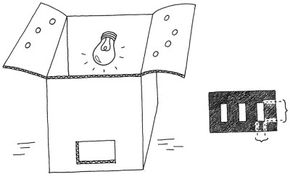Science projects for kids: light and heat are a great way for your children to learn how light and heat affect common objects. For instance, they can learn what new color is formed by mixing together two common colors. Or they can see if a growing plant will be able to find its way to a light source despite obstacles.
The best part about constructing science projects for kids: light and heat is that all your kids need are a few items to get started, a clean workspace, and they'll be off and ready to explore the world of science projects.
Advertisement
Follow the links below to learn how to create science projects for kids: light and heat:
Your children can learn all about creating different colors by simply combining red, blue, or green cellophane. Learn more here.
Your kids will discover that plants grow toward a light source no matter how many obstructions are in the way. Keep reading to find out more.
Keep reading to learn how to mix together colors to create new ones.
For more super science projects for kids, check out:
Advertisement
